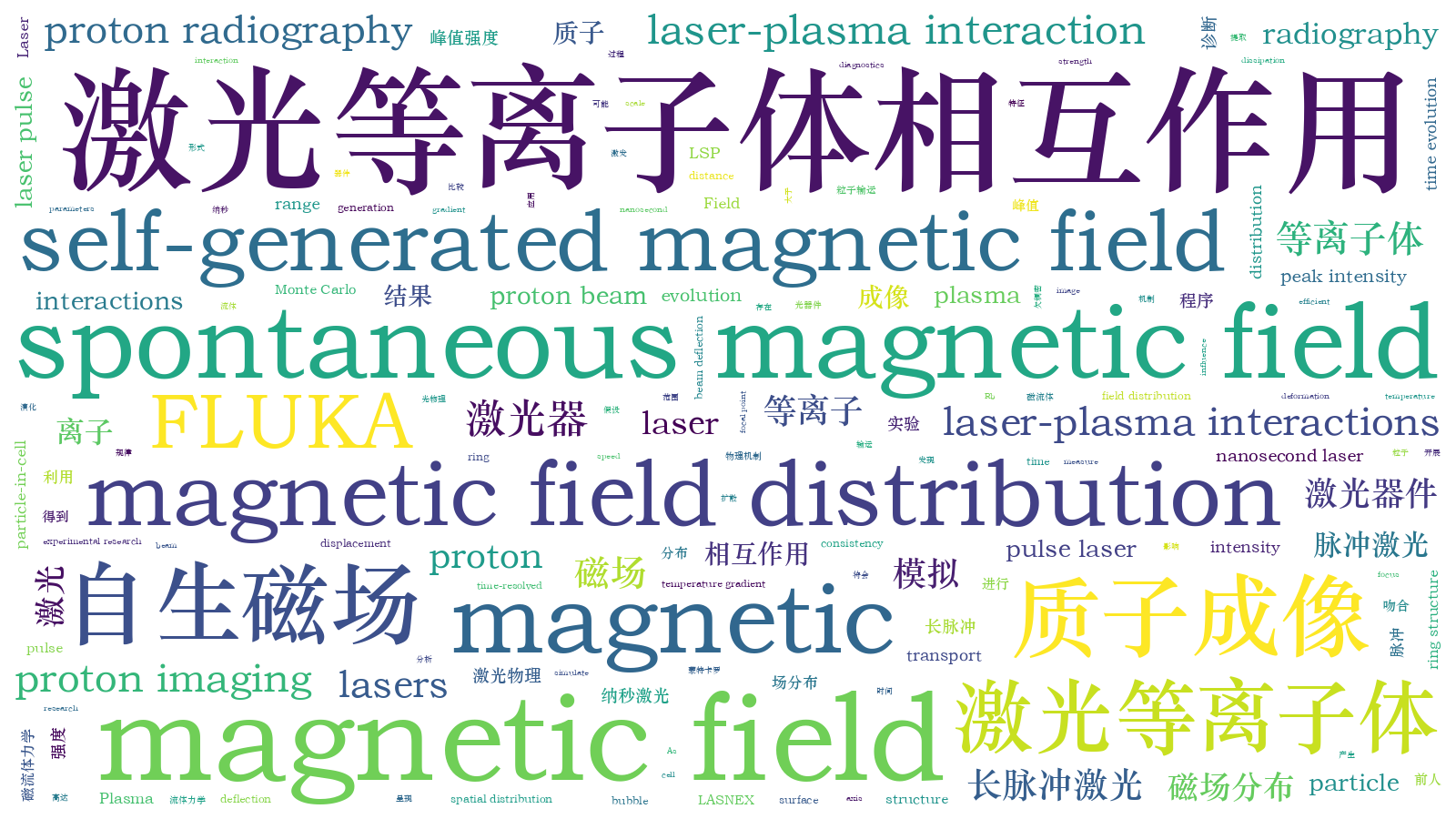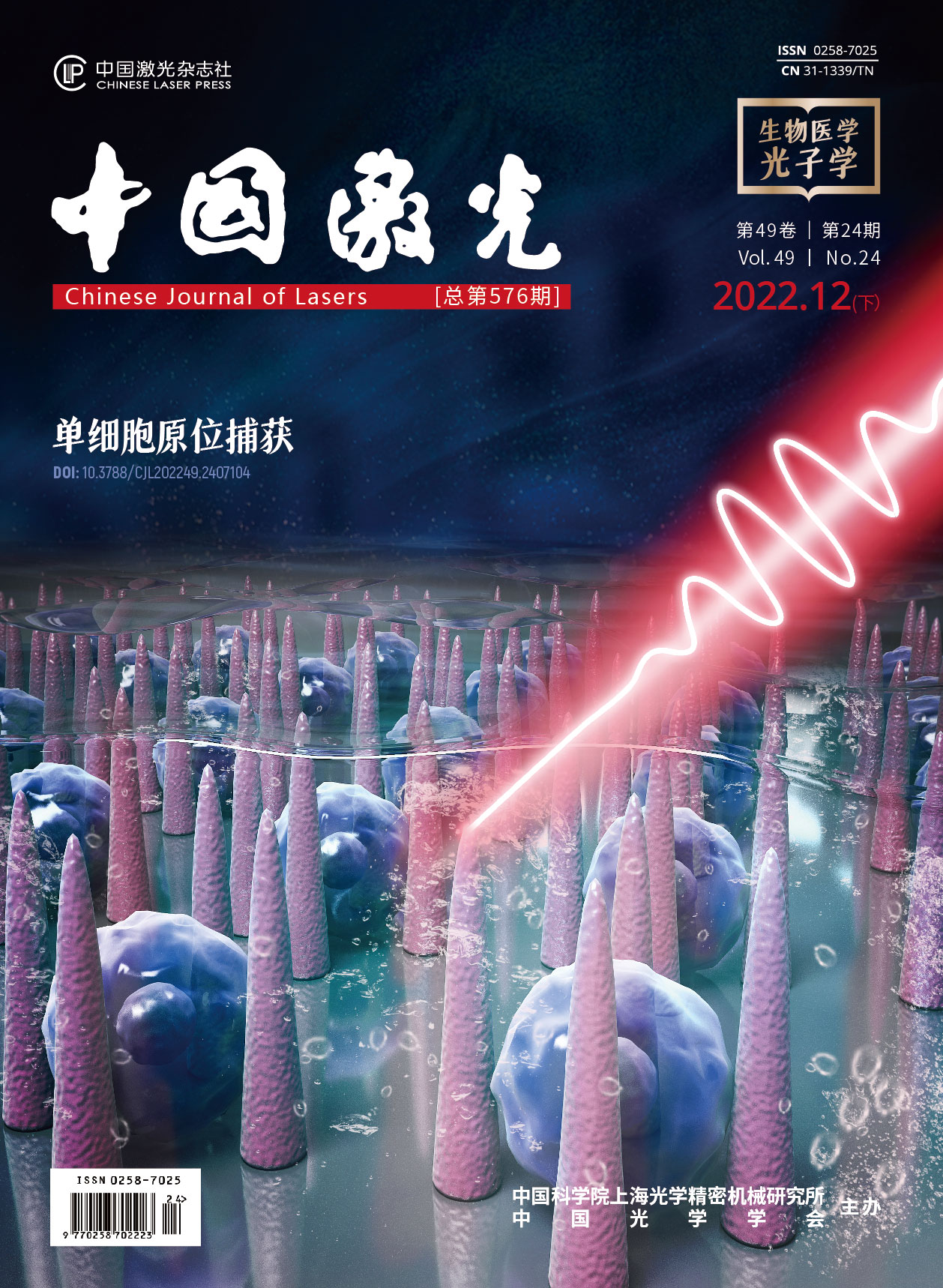利用FLUKA程序模拟长脉冲激光等离子体相互作用中自生磁场的质子成像诊断  下载: 576次
下载: 576次
在激光等离子体相互作用中,各种不同的物理机制将会激发产生强度高达100 T量级的自生磁场。针对前人开展的纳秒激光与等离子体相互作用中自生磁场的质子成像诊断实验,通过分析实验结果并提取磁流体力学模拟中所呈现出的磁场基本特征,对磁场形式进行了假设,并应用蒙特卡罗粒子输运程序FLUKA对质子成像过程进行了大量模拟,得到了与实验结果吻合度较高的磁场分布。通过比较发现:FLUKA模拟得到的磁场的峰值强度以及峰值强度随时间的演化规律与前人LASNEX模拟结果基本吻合,而磁场分布范围大于LASNEX模拟中的结果,这可能是由于磁扩散的影响和欠稠密等离子体的存在。
In laser-plasma interactions,a magnetic field with a strength up to 100 T magnitudes can be generated as a result of different physical mechanisms.In recent years,many achievements have been made in theoretical and experimental research on self-generated magnetic fields,including proton radiography diagnostics of magnetic fields.
In Ref.[12],time-resolved monoenergetic proton radiography was used to measure the magnetic field generated in nanosecond laser foil interactions.The 2D hydrodynamic program LASNEX was used to simulate magnetic field generation and evolution,and the hybrid particle-in-cell program LSP was used to calculate the image formed by the proton beam deflection due to the applied magnetic field.
The circular ring structure and overall deformation structure are reproduced almost exactly by LASNEX+LSP simulations.However,considering the mean radius of the ring and the deflection of each beamlet,there remain differences between the experimental results and the LASNEX+LSP results at 0.6 ns,0.9 ns,and 1.2 ns.
In this study,we attempt to determine the magnetic field distribution that matches the experimental results using the Monte Carlo particle transport program.
FLUKA is a versatile Monte Carlo particle transport program that can perform calculations about particle transport and interactions with matter.As it can reasonably consider the interaction between protons and matter and couple a magnetic field with a certain spatial distribution into the program,it can be used in the calculations of the proton radiography of the self-generated magnetic field,which is the focus of this study.
Based on the understanding of the generation mechanisms of the magnetic field,the features of the magnetic field distributions obtained via LASNEX simulations,and the displacement of each proton beamlet obtained from the experimental results in Ref.[12],we assume that the magnetic fields have the form
The spatial distributions and time evolution of the magnetic field deduced from FLUKA and those calculated from LASNEX are compared and analyzed.First,we find that the peak intensity of the magnetic field increases during the laser pulse,reaching 38 T at 0.9 ns,and decreases when the laser is switched off(Fig.4),which is consistent with the LASNEX results.Second,we roughly estimate the speed of plasma expansion when the laser is on according to the evolution of the radius of magnetic field(Fig.6).Third,we find that the range of the magnetic field inferred from the FLUKA calculations(Fig.7 and Table 1)is larger than that calculated from the LASNEX simulations.One main reason for this is the influence of magnetic field dissipation.Another reason is the existence of an under-dense plasma region with a small temperature gradient before the critical surface.
The distribution of the magnetic field in long-pulse laser-plasma interactions is achieved in this study.We achieve good consistency with the proton radiography images obtained in Ref.[12]using the FLUKA simulations.The evolution of the peak intensity and bubble radius are examined.The range of the magnetic field is compared with that calculated using the hydrodynamic program,LASNEX.The field range is found to be larger than that obtained from the LASNEX simulations,and possible reasons for this are analyzed.FLUKA can be an efficient tool for obtaining a detailed and reasonable interpretation of experimental data,which is vital in proton radiography studies.
高英英, 江小丹, 徐妙华, 李英骏. 利用FLUKA程序模拟长脉冲激光等离子体相互作用中自生磁场的质子成像诊断[J]. 中国激光, 2022, 49(24): 2401001. Yingying Gao, Xiaodan Jiang, Miaohua Xu, Yingjun Li. Proton Imaging Diagnosis of Spontaneous Magnetic Field in Long-Pulse Laser-Plasma Interactions Simulated by FLUKA Program[J]. Chinese Journal of Lasers, 2022, 49(24): 2401001.







